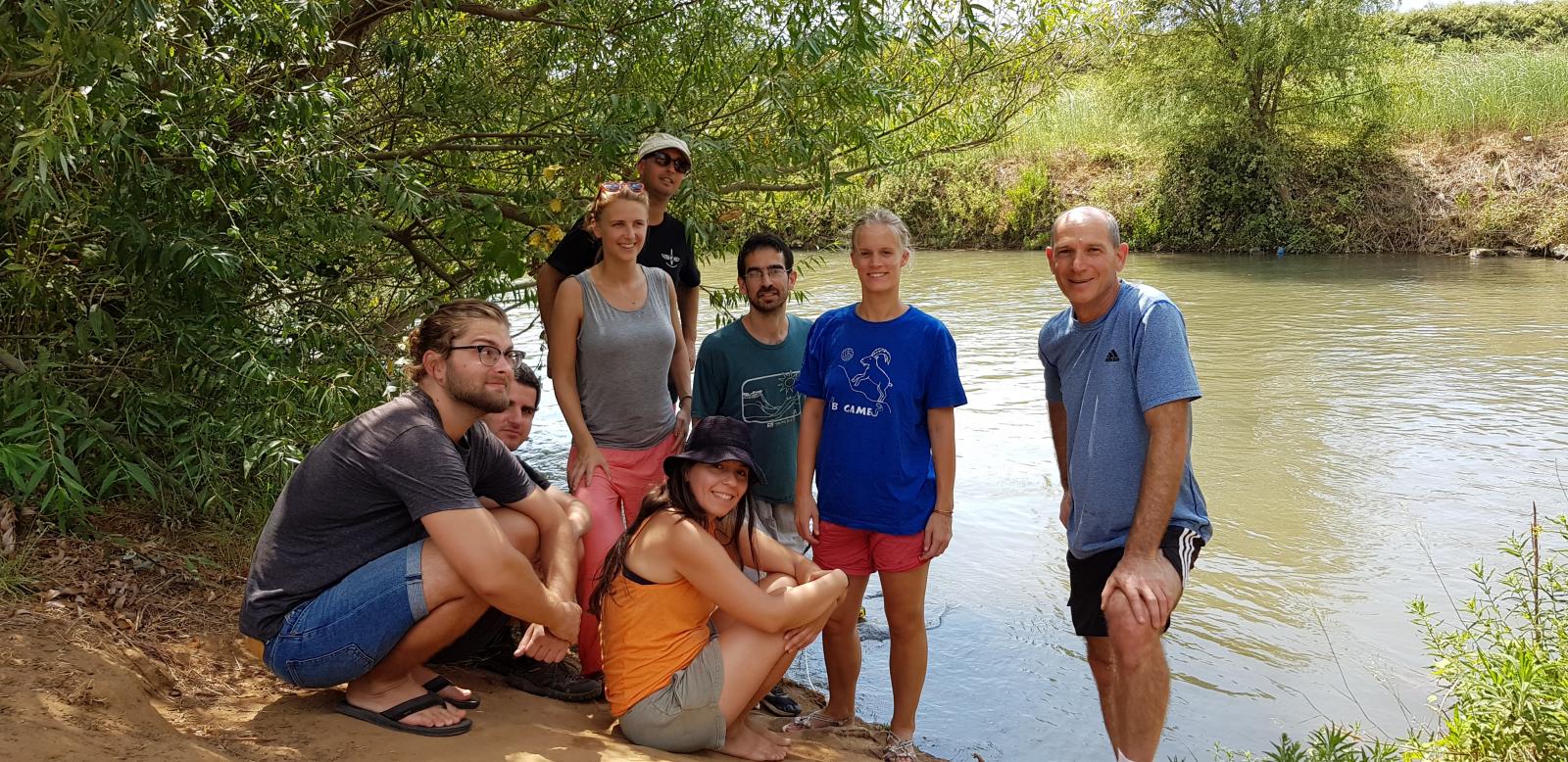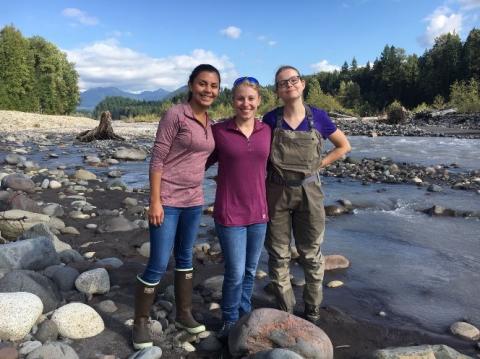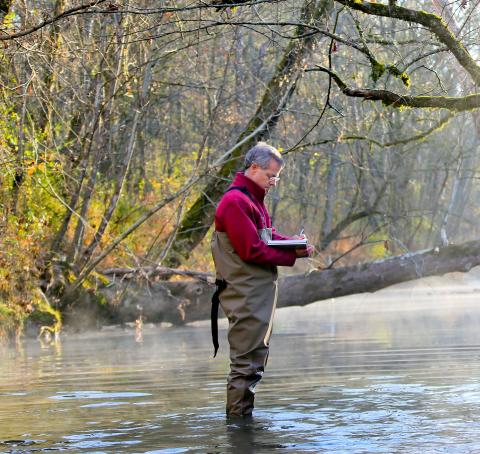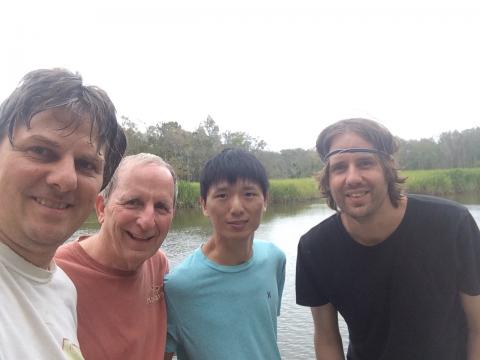WHONDRS 48-Hour Diel Cycling Study

The 48 Hour Diel Cycling Study occurred in 2018 and targeted time-series sampling across seven locations with different drivers of daily or sub-daily river stage variation. Surface water and hyporheic pore water samples were collected at the same location every three hours for 48 hours in systems driven by hydropower dams (WA, USA), wastewater effluent (TN, USA; Germany), glacial melt (WA, USA), tidal fluctuations (GA, USA), evapotranspiration (OR, USA), and irrigation pumping (Israel).
Spatial coverage
Click on the upper left corner of the map for options to turn on and off campaign-specific sampling sites.
Collaborators

Altamaha River, GA, USA - Christof Meile
Columbia River, WA, USA - Vanessa Garayburu-Caruso, Casey Grieshauber, Lupita Renteria, James Stegen, Jacqueline Wells, Joe Morad
East Fork Poplar Creek, TN, USA - Scott Brooks
Erpe River, Germany - Joerg Lewandowski, Birgit Maria Mueller, Hannah Schulz
HJ Andrews WS1, OR, USA - Vanessa Garayburu-Caruso, Lupita Renteria, Jacqueline Wells
Jordan River, Israel - Shai Arnon, Edo Bar-Zeev, Silvia Gobrecht
Nisqually River, WA, USA - Vanessa Garayburu-Caruso, Lupita Renteria, Katherine Znotinas, Jacqueline Wells
Data types
Surface water and pore water:
- anions
- cations
- total N
- NPOC
- specific conductivity
- pH
- FTICR-MS (EMSL)
- hydrograph (USGS and others)
- metagenomics (via Kelly Wrighton at Colorado State University and the Joint Genome Institute)

Ideas for science questions to explore with the data
- Is there a core metabolome globally shared between surface and pore water and are molecular properties of this core metabolome distinct from the transient metabolome?
- Do molecular properties of dissolved organic matter vary on sub-daily timescales in parallel with hydrologic dynamics?
- How does the metabolic potential of microbial communities differ between surface and pore water, and are there sub-daily temporal dynamics that can be linked to biochemical processes associated with dissolved organic matter?
Data access
Chu R K; Goldman A E; Brooks S C; Danczak R E; Garayburu-Caruso V A; Graham E B ; Jones M; Jones N; Lin X; Morad J W; Ren H; Renteria L; Resch C T; Tfaily M; Tolic N; Toyoda J G; Wells J R; Stegen J C (2019): WHONDRS 48 Hour Diel Cycling Study at the East Fork Poplar Creek, TN. Worldwide Hydrobiogeochemistry Observation Network for Dynamic River Systems (WHONDRS). doi:10.15485/1577278
Danczak R E; Goldman A E; Chu R K; Garayburu-Caruso V A; Graham E B; He X; Lin X; Meile C; Morad J W; Ren H; Renteria L; Resch C T; Rooze J; Schalles J; Tfaily M; Thomle J; Tolic N; Toyoda J G; Wells J R; Stegen J C (2019): WHONDRS 48 Hour Diel Cycling Study at the Altamaha River, GA. Worldwide Hydrobiogeochemistry Observation Network for Dynamic River Systems (WHONDRS). doi: 10.15485/1577263

Garayburu-Caruso V A; Goldman A E; Chu R K; Danczak R E; Graham E B; Lin X; Morad J W; Ren H; Renteria L; Resch C T; Tfaily M; Tolic N; Toyoda J G; Wells J R; Stegen J C (2019): WHONDRS 48 Hour Diel Cycling Study at the Columbia River, WA. Worldwide Hydrobiogeochemistry Observation Network for Dynamic River Systems (WHONDRS). doi: 10.15485/1577265
Goldman A E; Arnon S; Bar-Zeev E; Chu R K; Danczak R E; Garayburu-Caruso V A; Graham E B; Lin X; Morad J W; Ren H; Renteria L; Resch C T; Tfaily M; Tolic N; Toyoda J G; Wells J R; Stegen J C (2019): WHONDRS 48 Hour Diel Cycling Study at the Jordan River, Israel. Worldwide Hydrobiogeochemistry Observation Network for Dynamic River Systems (WHONDRS). doi: 10.15485/1577266
Renteria L; Goldman A E; Chu R K; Danczak R E; Garayburu-Caruso V A; Graham E B; Lin X; Morad J W; Ren H; Resch C T; Tfaily M; Tolic N; Toyoda J G; Wells J R; Znotinas K R; Stegen J C (2019): WHONDRS 48 Hour Diel Cycling Study at the Nisqually River, WA. Worldwide Hydrobiogeochemistry Observation Network for Dynamic River Systems (WHONDRS). doi: 10.15485/1576995
Stegen J C; Goldman A E; Blackburn S E; Chu R K; Danczak R E; Garayburu-Caruso V A; Graham E B; Grieshauber C; Lin X; Morad J W; Ren H; Renteria L; Resch C T; Tfaily M; Tolic N; Toyoda J G; Wells J R; Znotinas K R (2018): WHONDRS Surface Water Sampling for Metabolite Biogeography. Worldwide Hydrobiogeochemistry Observation Network for Dynamic River Systems (WHONDRS). doi: 10.15485/1484811
Stegen J C; Goldman A E; Chu R K; Danczak R E; Garayburu-Caruso V A; Graham E B; Lin X; Morad J W; Ren H; Renteria L; Resch C T; Tfaily M; Tolic N; Toyoda J G; Wells J R (2019): WHONDRS 48 Hour Diel Cycling Study at HJ Andrews Experimental Forest Watershed 1 (WS1). Worldwide Hydrobiogeochemistry Observation Network for Dynamic River Systems (WHONDRS). doi: 10.15485/1509695
Wells J R; Goldman A E; Chu R K; Danczak R E; Garayburu-Caruso V A; Graham E B; Lewandowski J; Lin X; Meinikmann K; Morad J W; Müller B M; Ren H; Renteria L; Resch C T; Schulz H; Tfaily M; Tolic N; Toyoda J G; Stegen J C (2019): WHONDRS 48 Hour Diel Cycling Study at the Erpe River, Germany. Worldwide Hydrobiogeochemistry Observation Network for Dynamic River Systems (WHONDRS). doi: 10.15485/1577260
Funding
Funding for this project is provided by the U.S. Department of Energy (DOE) Biological and Environmental Research (BER) Environmental Systems Science (ESS) Program.